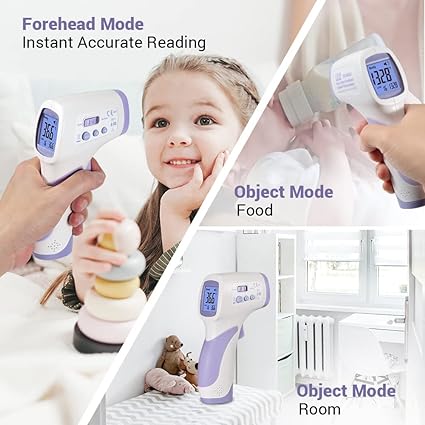What is a Smart Thermometer
A smart thermometer is an innovative type of device capable of measuring body temperature at any time and providing corresponding treatment plans based on the patient’s temperature. Its notable feature is the ability to send the patient’s body temperature information to the doctor’s mobile phone, facilitating communication between the patient and the doctor. This helps doctors monitor the patient’s physical health status and devise timely treatment plans. The smart thermometer employs electronic induction to assess the temperature of the human body or liquids and can identify abnormal body temperatures.
Uses of Smart Thermometers
Automatic and continuous body temperature monitoring: Common Bluetooth wearable smart thermometers, such as watch thermometers, Bluetooth thermometers, and Bluetooth body temperature stickers, enable automatic and continuous body temperature monitoring, significantly reducing the workload and mental stress of caregivers.
Automatic fever alarm: The smart thermometer automatically issues an alarm when the body temperature exceeds the critical fever value, such as ≥37.5℃.
Generation of body temperature change curve on smartphone apps: The smart thermometer produces a body temperature change curve on smartphone apps, facilitating intuitive analysis and judgment of fever trends and reductions.
Cloud monitoring and big data analysis: Doctors can remotely diagnose patients and offer treatment suggestions. Large-scale data analysis and data mining become possible when a substantial amount of data is collected.
Advantages and Disadvantages of Different Types of Smart Thermometers
Adhesive Smart Thermometers (Replaceable Batteries)
- Accuracy: 0.1-0.2℃
- Collection range: Continuous temperature measurement 25 ~ 45
- Transmission method: Bluetooth 4.0
- Guardian status: No need for constant supervision
- Nursing assistance: 3M adhesive on the skin
- Real-time monitoring: High-temperature alarm (some with low-temperature alarm)
- Display Method: Smart terminal app
- Advantages: Lightweight, easy to use, quick temperature measurement
- Disadvantages: Adhesive method may cause skin irritation, requires a smart terminal for operation.
Adhesive-Type Smart Thermometer (Non-replaceable Battery)
- Accuracy: 0.1-0.2℃
- Collection range: Continuous temperature measurement 25 ~ 43
- Transmission method: Bluetooth 4.0
- Guardian status: No need for constant supervision
- Nursing assistance: Medical tape to stick to the skin
- Real-time monitoring: High-temperature alarm (some with low-temperature alarm)
- Display mode: Smart terminal app
- Advantages: Lightweight, easy to use, quick measurement, waterproof, and easy to clean
- Disadvantages: Adhesive method may cause skin irritation, requires a smart terminal for operation.
Bundled Smart Thermometer (Replaceable Battery)
- Accuracy: 0.1-0.2℃
- Collection range: Continuous temperature measurement 32 ~ 45
- Transmission method: Bluetooth 4.0
- Guardian status: No need for constant supervision
- Nursing assistance: Medical cloth straps
- Real-time monitoring: High-temperature alarm
- Display mode: Smart terminal app
- Advantages: Lightweight, easy to use, quick measurement, wearable with a display screen, skin-friendly, independent operation without a smart terminal, 1000-hour battery life.
- Disadvantages: No low-temperature alarm, sensitive to the surrounding environment, cannot be cleaned.
Pacifier Smart Thermometer
- Accuracy: 0.1℃
- Collection range: Continuous temperature measurement 32-45
- Transmission method: Bluetooth 4.0
- Guardian status: No need for constant supervision
- Nursing assistance: Food-grade silicone material
- Real-time monitoring: High-temperature alarm
- Display mode: Smart terminal app
- Advantages: Lightweight, easy to use, quick temperature measurement, easy to wear
- Disadvantages: No low-temperature alarm, not suitable for prolonged use by babies.
How to Use a Smart Thermometer
Generally, a smart thermometer does not require manual operation as it functions automatically, sensing body temperature through a high-precision thermal sensor. To measure body temperature in the armpit or upper arm, transmit the measured data to the thermometer app on a smartphone via Bluetooth. After software analysis, the app provides feedback, such as issuing a fever alarm or enabling continuous automatic monitoring. Some smart thermometers can connect directly to smartphones, displaying body temperature directly on the phone. However, users typically need to download an app related to the smart thermometer on their smartphones for use, making the process convenient and straightforward.

